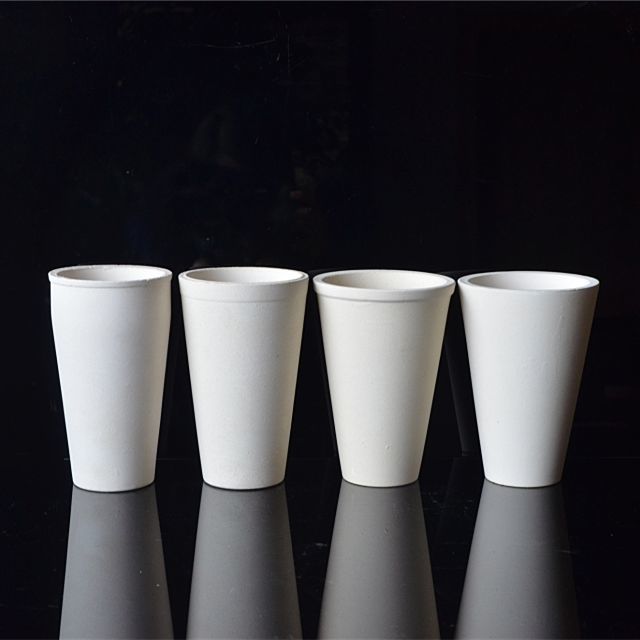
The Versatility of Pyrolytic Boron Nitride Crucibles in Construction and Ceramics
Time:
2025-07-31 19:40
Source:
Pyrolytic boron nitride (PBN) crucibles are gaining recognition in industries that require reliable and efficient high-temperature solutions, particularly in construction and decorative materials, ceramics, and bricklaying. Understanding the properties and benefits of PBN crucibles can significantly enhance the manufacturing processes and overall product quality in these fields.
PBN is a synthetic, high-performance material characterized by its excellent thermal stability, low thermal conductivity, and remarkable chemical resistance. When subjected to high temperatures, PBN maintains its structural integrity, making it an ideal choice for crucibles used in ceramic processing and other applications that involve extreme heat. This stability allows for a more consistent melting process, which is essential for achieving high-quality ceramic and brick products.
One of the primary advantages of using pyrolytic boron nitride crucibles is their ability to withstand temperatures well above 2000°C without deforming or reacting with the materials being processed. This feature is particularly useful in the production of advanced ceramics, where precise temperature control is crucial for achieving desired material characteristics. Manufacturers can rely on PBN crucibles to provide uniform heating, fostering improved material properties and reducing the risk of defects during manufacturing.
Additionally, PBN crucibles exhibit low wettability with molten metals and ceramics, which helps prevent contamination and ensures purity in the final products. This property is especially important in applications where the integrity of the material is paramount. By minimizing interactions between the crucible and the molten material, PBN crucibles help preserve the chemical and physical properties of the materials being processed.
The lightweight nature of pyrolytic boron nitride is another benefit that makes it appealing for use in the construction and ceramics industry. Lighter crucibles are easier to handle and transport, which can enhance productivity and efficiency in manufacturing environments. Moreover, the durability of PBN allows for extended usage, reducing the frequency of replacements and thereby lowering production costs over time.
In the realm of ceramics, PBN crucibles can be utilized not only for high-temperature melting but also for various processes such as sintering and casting. Their versatility in these applications makes them an invaluable tool for manufacturers striving to innovate and improve their product offerings.
In conclusion, pyrolytic boron nitride crucibles provide significant advantages in terms of thermal stability, chemical resistance, and low wettability, making them a vital component in the construction and ceramics industry. Their unique properties enable manufacturers to achieve superior product quality and operational efficiency, paving the way for advancements in building materials and ceramic technologies. As industries continue to seek high-performance materials, the role of PBN crucibles is poised to grow, highlighting their importance in the evolving landscape of construction and decorative materials.
PBN is a synthetic, high-performance material characterized by its excellent thermal stability, low thermal conductivity, and remarkable chemical resistance. When subjected to high temperatures, PBN maintains its structural integrity, making it an ideal choice for crucibles used in ceramic processing and other applications that involve extreme heat. This stability allows for a more consistent melting process, which is essential for achieving high-quality ceramic and brick products.
One of the primary advantages of using pyrolytic boron nitride crucibles is their ability to withstand temperatures well above 2000°C without deforming or reacting with the materials being processed. This feature is particularly useful in the production of advanced ceramics, where precise temperature control is crucial for achieving desired material characteristics. Manufacturers can rely on PBN crucibles to provide uniform heating, fostering improved material properties and reducing the risk of defects during manufacturing.
Additionally, PBN crucibles exhibit low wettability with molten metals and ceramics, which helps prevent contamination and ensures purity in the final products. This property is especially important in applications where the integrity of the material is paramount. By minimizing interactions between the crucible and the molten material, PBN crucibles help preserve the chemical and physical properties of the materials being processed.
The lightweight nature of pyrolytic boron nitride is another benefit that makes it appealing for use in the construction and ceramics industry. Lighter crucibles are easier to handle and transport, which can enhance productivity and efficiency in manufacturing environments. Moreover, the durability of PBN allows for extended usage, reducing the frequency of replacements and thereby lowering production costs over time.
In the realm of ceramics, PBN crucibles can be utilized not only for high-temperature melting but also for various processes such as sintering and casting. Their versatility in these applications makes them an invaluable tool for manufacturers striving to innovate and improve their product offerings.
In conclusion, pyrolytic boron nitride crucibles provide significant advantages in terms of thermal stability, chemical resistance, and low wettability, making them a vital component in the construction and ceramics industry. Their unique properties enable manufacturers to achieve superior product quality and operational efficiency, paving the way for advancements in building materials and ceramic technologies. As industries continue to seek high-performance materials, the role of PBN crucibles is poised to grow, highlighting their importance in the evolving landscape of construction and decorative materials.
pyrolytic boron nitride crucible

